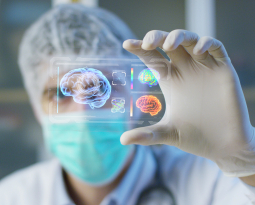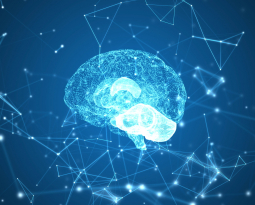
Get Better Results with Brain Based Postural Correction
If you are looking to gain more certainty in practice, and to get better postural correction results with your patients, then consider the value of Brain Based Postural Correction. Brain Based Postural Correction is the methodology of Postural Neurology in which the practitioner corrects dysfunctional output of the neurology controlling the Posture System.
Because neurology can be complex, and quite honestly overwhelming, the American Posture Institute has developed a system of Brain Based Postural Correction called the Eyes-Spine-Vestibular model. By focusing on the Eyes, Spine, and Vestibular systems you will get results meeting the needs of modern-day patients.
Eyes-Spine-Vestibular Model of Correction
The eyes, or the visual system, plays a fundamental role in postural orientation within our environment. When patients have proper vision they have increased postural stability because they can orient themselves more efficiently within the environment. The visual system also plays a significant role in proper head posture. The ability to keep the eyes parallel to the horizon while moving our heads in space is a uniquely human characteristic that is fundamental for human function.
The spine is involved in sensorimotor integration from the brain to the body. Ascending pathways arrive in the sensory cortex from the periphery; these pathways transport information relative to sensation and body position. The sensory cortex interprets the information received from the periphery, and the motor cortex produces an appropriate motor response to the input. The motor response of the motor cortex occurs by descending spinal tracts transporting the neural signal to the peripheral musculature.
This is sensorimotor integration. The sensory cortex perceives changes in joint position from the periphery and the motor cortex accurately responds to stabilize the Posture System upright against gravity during dynamic movements.
The third component of the Eyes-Spine-Vestibular model of Brain Based Postural Correction is the vestibular system. Proper posture is reliant on function of the vestibular system for balanced postural stabilization and upright postural design. Sensors within the inner ear sense positional changes against gravity relative to postural equilibrium. With proper functional output of the vestibular system, patients have better balance.
The vestibular system also stimulates extension. One of the most common postural distortion patterns of the Posture System is flexor dominance. When the vestibular system stimulates extension, the result is decreased flexor tone to maintain the body upright against gravity in the most efficient manner possible.
Brain Based Postural Correction Exercises that are Easy to Implement
Visual Exercises:
- Gaze Stabilization: Have the patient stabilize their gaze in the direction of weak gaze stabilization during cardinal fields of gaze. You can have them do this by thinking of their visual gaze like a clock, they would hold their gaze at 3 o’clock to stimulate gaze up and to the right for example. They hold the position for 10-20 seconds.
- Small Eye Circles: Have the patient perform small eye circles by moving their finger or a pen tip in a circle in front of their eyes for 30 seconds. By doing this the patient is stimulating each of the extraocular eye muscles and is performing convergence and divergence of the eyes.
Spinal Exercises:
- Wall Posture: To perform Wall Posture have the patient stand against the wall with their feet shoulder width apart and a foot from the wall. The head, shoulders, spine, hips, and gluts are pressed against the wall with the back flat. Keeping the legs straight, have the patient tuck their pelvis, then arch their pelvis. With a tuck the back is flat against the wall and with an arch the lower back comes off of the wall in an arc (the hips are still against the wall). The patient performs this exercise multiple times to stimulate extension of the Posture System and proper spinal alignment.
- Neck Retractions: Neck retractions reverse the postural distortion pattern of forward head posture. With the patient in the same position as they were in for Wall Posture, have them pull their chin back and press the back of their head against the wall and hold. Instruct the patient to keep their eyes parallel with the ground. Repeat for multiple repetitions.
Vestibular Exercises:
- One Leg Balance: To perform One Leg Balance the patient is on a sturdy surface and near a wall if necessary for support. The patient stands on one leg by pulling the opposite leg up to 90 degrees. The knee and the hip are in the same plane and the knee is aligned over the ankle. Both feet are pointed forward, the back is straight, shoulder back, the chin is pulled back and the ears are aligned over the shoulders, the patient is looking straight ahead. Challenge the patient to maintain this position for 30 seconds with proper posture.
- One Leg Balance with Eyes Closed: Once the patient can do One Leg Balance as instructed above, have them perform the same exercise with their eyes closed. This makes it more difficult by eliminating the visual field of gaze and is a progression for advanced vestibular rehabilitation.
These systems are interconnected and are all being activated with the Eyes-Spine-Vestibular model. This approach is the best for brain based postural correction. If postural correction is the goal in your office, this is the Go-To model for brain based postural correction.

















